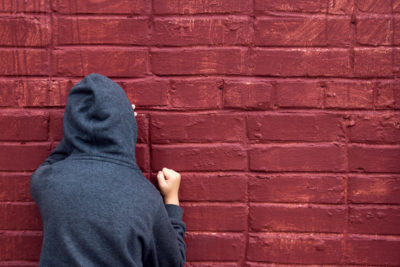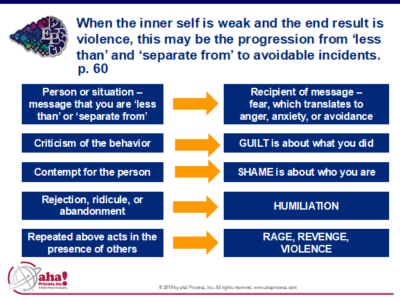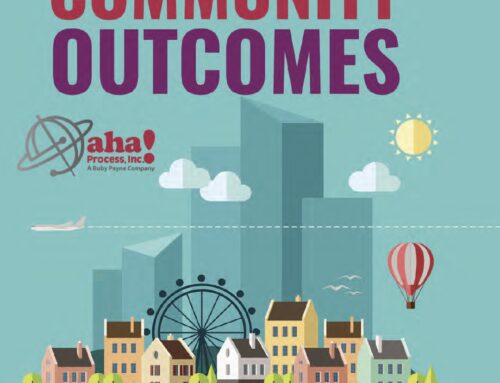 Why would an educator write about mass shooters? Because educators observe the process in the creation of a mass shooter. Educators operate at the intersection of families, courts, law enforcement, psychologists, diagnosticians, medical issues, counselors, and parents. The process of creating a mass shooter happens over time, and educators often spend years with the same children and watch it develop.
Why would an educator write about mass shooters? Because educators observe the process in the creation of a mass shooter. Educators operate at the intersection of families, courts, law enforcement, psychologists, diagnosticians, medical issues, counselors, and parents. The process of creating a mass shooter happens over time, and educators often spend years with the same children and watch it develop.
The following process is based upon data from the research and 30-plus years of being on thousands of school campuses across the United States in myriad roles—teacher, building and central office administrator, regional service center role, author, speaker, and consultant. This process looks at both the practice and research around mass shooters in schools.
How does the process begin and progress?
- It beings with a male. The vast majority of mass shooters in schools are male (Statista, 2022).
- Emotional wellness is based in safety and belonging. In the first five years of life, often the primary adult caregivers are absent, unavailable, unstable, and/or hovering and exacting. Mass shooters frequently have trauma of some kind (Peterson and Densley, 2021). The resources to provide support and help at school are limited, and school time is focused strictly on academic achievement. The more often a boy is criticized, shamed, ignored, and harshly punished, and the fewer positive male role models a boy has, then there is less development of brain regulation and less establishment of caring behaviors.
- If a boy is the youngest in class when he starts school, his chances of school success drops (Willson and Hughes, 2009). It is often the youngest male students in a class (June through August birthdays) who tend to struggle with school and have more failures.
- The process is accelerated if a student experiences many “less than” and “separate from” incidents in school. That will accelerate the development of a student as a loner. More than 90% of mass shooters are loners. If a boy does not meet academic expectations (because his brain development was disrupted by the stressors of the first five years of life), and if the school takes away physical education, recess, and art and music classes so he can devote that time to academics, then he will feel “less than” and “separate from.” Eating alone at lunch and playing alone at recess will increase his aloneness. In the book The Violence Project: How to Stop a Mass Shooting Epidemic, the authors indicate that isolation, self-hatred, and peer rejections are all part of the pattern. What is different in a mass shooter is that self-hate becomes targeted to hatred of a particular group.
- The process is accelerated when state laws and school board policies tie the hands of educators so that it is difficult to make adaptations. Setting exacting and rigorous achievement standards (rigor) that are totally irrelevant to a boy’s experiences (relevance) can help ensure that he will become disengaged from learning. Zero tolerance laws and policies that require punishment rather than provide support hasten development.
- The process is helped if a boy goes through puberty two or more years earlier or later than his peers (Berger, 2019). This can promote early criminal activity, early sexual activity, and the near-certain failure of at least one subject in his first year of high school.
- When a boy goes through puberty and his brain physically restructures itself (prunes and myelinates), his social brain development may be unguided by positive adult role models. This will have negative effects on his social cognition, social dominance, perspective taking, development of a moral code, and risk-reward analysis. If a boy has lots of screen time, particularly porn, this will allow his brain, which is physically restructuring, to structure his developing sexual self in relationship to a screen. That way he will have more health issues when he is older because he will become socially isolated and even more of a loner. Social isolation is more damaging to one’s health than smoking 15 cigarettes a day, and, on average, socially isolated people die 10 years earlier than their peers. The attachment to porn will also make it more difficult for him to have a sexual relationship in real life, which means that he will experience more failure and rejection. This often means he will become angrier. Anger is a fabulous chemical. It gives energy (amphetamine), and it numbs the pain (analgesic). As he develops more anger, it is important for him to “target” a group to receive his anger.
- Mass shootings are more likely if a student has had a loss or perceived loss. The FBI reports that over 90% of mass shooters identify a loss or perceived loss prior to committing their murders. The mass shooter in Santa Fe, Texas, was humiliated by a girl in a very public setting. The mass shooter in Uvalde, Texas, was not going to graduate from high school.
- The more frequently a potential mass shooter goes through the below emotional processes without any interventions or supports from nurturing, caring adults, the more likely that violence will be a result. According to research about adverse childhood experiences, a nurturing, caring adult is the most protective factor any human can have.

This graphic is from the book Emotional Poverty in All Demographics, available from www.ahaprocess.com.
- If the hands of law enforcement and educators are tied so that nothing can be done until a boy “does something,” then the opportunity is prime. Without red flag laws, it is more difficult to stop the carnage.
- The experiences of shame, humiliation, trauma, aloneness, and little respect are often part of the pathway to violence. As Peterson and Densley identify, it is actually a suicide for the shooter because he almost always dies (i.e., people will know who I am before I die). If my life has no value, then other peoples’ lives have no value either.
What Can We Do to Reduce Mass Shootings in Schools?
- Understand that over 90% of the time, shooters often kill in the schools they attend/attended (Peterson and Densley). Schools need to track the students who are most emotionally unstable, those who are loners, and those who have virtually no friends. These are red flags.
- “Hardening” schools (locks, guards, security) does not stop mass shootings. According to the FBI, one of the most protective factors any school can have is safety and belonging for all students.
- Use the emotional triage strategy listed in my book, Emotional Poverty, to identify and make interventions with students who exhibit red flag behavior and to keep track of the complete campus. Educators usually know which students are unstable, but schools typically do not have a master plan for that (unlike academic performance, where every student is tracked).
- Provide educators the information in Emotional Poverty about the stages of emotional development, how the brain works emotionally, the emotional motivations for behaviors, and ways to lessen anger and change the motivation for the behavior. Move toward the development of emotional stability rather than the punishment for the lack of emotional stability.
- Move the theoretical frame of education away from a strictly cognitive approach to look at neurobiology and the driver that emotion is in learning and behavior. Rather than isolate students in special education because they are “emotionally disturbed,” we should develop their emotional well-being. Imagine if a student came in as a non-reader and we said, Let’s identify them as a non-reader, but let’s not do anything to develop them as a reader. Yet that is what we do with emotionally unstable students.
- Rethink how we educate male students. Seventy-six percent of K–12 educators are female, but 50% of the population is male. Yet the majority of our discipline referrals, special education students, and dropouts are males. And the vast majority of mass shooters are males.
Educators often spend years working with the same students in some fashion. They know when a child is in trouble. They see the process in action. They often spend more time with students than the parent does. Let’s give them the tools to make interventions and earlier identification. Let’s give educators a voice in this process.
Sources:
Berger, K. S. (2019). The developing person through the life span. New York, NY: Worth.
Payne, R. (2018). Emotional poverty in all demographics: How to reduce anger, anxiety, and violence in the classroom. Highlands, TX: aha! Process.
Peterson, J., & Densley, J. (2021). The violence project: How to stop a mass shooting epidemic. New York, NY: Abrams.
Statista (June 2, 2022). Number of mass shootings in the United States between 1982 and June 2022, by shooter’s gender. https://www.statista.com/statistics/476445/mass-shootings-in-the-us-by-shooter-s-gender/.
Willson, V., & Hughes, J. (2009). Who is retained in first grade? A psychosocial perspective. Elementary School Journal, 109(3), 251–266. Retrieved from https://www.journals.uchicago.edu/doi/10.1086/592306.








